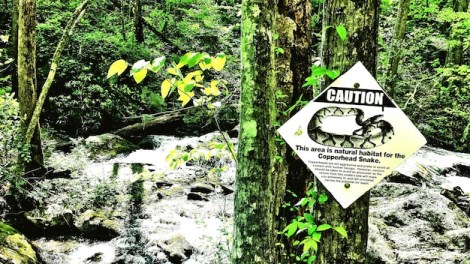

The Amazon rainforest is the largest tropical rainforest in the world.
Rainforests cover only 6% of the Earth’s surface but contain more than half of the world’s plant and animal species.
The rainforest produces 20% of the world’s oxygen.
Rainforests are home to indigenous tribes that have lived in harmony with nature for thousands of years.
The rainforest is a treasure trove of medicinal plants, with a quarter of all modern medicines derived from rainforest ingredients.
Rainforests are vital for regulating the Earth’s climate, as they absorb carbon dioxide and release oxygen.
Deforestation is the biggest threat to rainforests, with an area the size of a football field being destroyed every second.
Rainforests are often referred to as the lungs of the Earth.
Rainforests help maintain hydrological cycles by regulating rainfall patterns and preventing floods.
Rainforests are incredibly biodiverse, with a single square mile containing over 50,000 species of insects.
The rainforest is characterized by its dense vegetation and tall trees that form a canopy, blocking sunlight from reaching the ground.
The majority of the world’s fruit, including bananas, pineapples, and coconuts, originated from rainforests.
The Amazon rainforest is home to over 400 billion individual trees.
Rainforests are also known as the world’s pharmacy due to the vast array of medicinal plants found within them.
Rainforests help mitigate climate change by acting as carbon sinks, absorbing and storing carbon dioxide.
Rainforests are incredibly noisy due to the abundance of birds, insects, and other animals.
The world’s largest butterfly, the Queen Alexandra’s birdwing, is found in rainforests.
Rainforest trees can grow up to 200 feet tall and have large buttress roots for stability.
Rainforests are under constant threat from logging, agriculture, and mining activities.
Rainforests are home to some of the world’s most endangered species, including orangutans, jaguars, and harpy eagles.
The rainforest is a natural air conditioner, as the evaporation of water from the leaves cools the surrounding air.
Rainforests receive a high amount of rainfall, usually between 80 and 400 inches per year.
Rainforests are like a giant puzzle, with each plant and animal playing a crucial role in maintaining the delicate ecosystem.
The rainforest floor is covered in a layer of decaying leaves and organic matter known as the forest carpet.
Many indigenous communities rely on rainforests for their livelihoods, obtaining food, shelter, and medicine from the forest.
Some rainforest plants have adapted to survive in low-light conditions by growing large, colorful leaves to capture as much sunlight as possible.
Rainforests are home to numerous species of venomous snakes, such as the pit viper and bushmaster.
Rainforests are known for their incredibly diverse bird populations, with a variety of species found nowhere else on Earth.
The Amazon rainforest is often called the Green Lung of the Earth due to its crucial role in maintaining the planet’s oxygen levels.
Rainforests are teeming with life, with an estimated 50,000 species of plants and animals becoming extinct each year due to deforestation.
The canopy layer of the rainforest is the most biodiverse, with countless species of trees, vines, and epiphytes.
Rainforests have been inhabited by humans for at least the past 50,000 years.
Rainforest soil is generally nutrient-poor, with most nutrients being stored in the plants themselves.
The rainforest is a peaceful and tranquil place, with the constant sounds of flowing water, chirping birds, and buzzing insects.
Many rainforest animals have evolved bright and vibrant colors as a form of camouflage or warning to predators.
Rainforests are crucial for maintaining freshwater sources, as rivers originate from the high rainfall runoff.
Rainforest trees are often described as self-pruning, as lower branches die off to allow sunlight to reach the forest floor.
Rainforests are considered the oldest living ecosystems on Earth, with some remaining relatively unchanged for millions of years.
Rainforests are often referred to as the Earth’s last frontier due to the vast unexplored areas and undiscovered species.
The canopy layer of the rainforest is home to a diverse array of primates, including monkeys, gibbons, and lemurs.
Rainforest birds are known for their extravagant mating rituals and vibrant plumage.
Rainforest trees can communicate with each other through chemical signals to warn of incoming threats or share nutrients.
Rainforests are a hotbed for scientific research, with new species being discovered regularly.
Rainforests contribute to the water cycle by releasing moisture through transpiration, which helps create cloud formation and rainfall.
Rainforests are not just important for their ecological value but also for their immense beauty and inspiration they provide to artists and poets.
Around the world, coffee enthusiasts enjoy Monin coffee concentrate since it is a multipurpose product. Conveniently combining…
The Importance of Choosing the Right Shower for Your Bathroom Renovating your bathroom can be…
Usain Bolt holds the record for the fastest 100-meter sprint in history.Bolt was named Sportsman…
Love is in the air... and it smells suspiciously like chocolate!Roses are red, violets are…
Life's a beach, take a picture and relax.Sun, sand, and salty kisses. That's what beach…
Hungary is home to the largest thermal water cave system in the world.The Rubik's Cube…